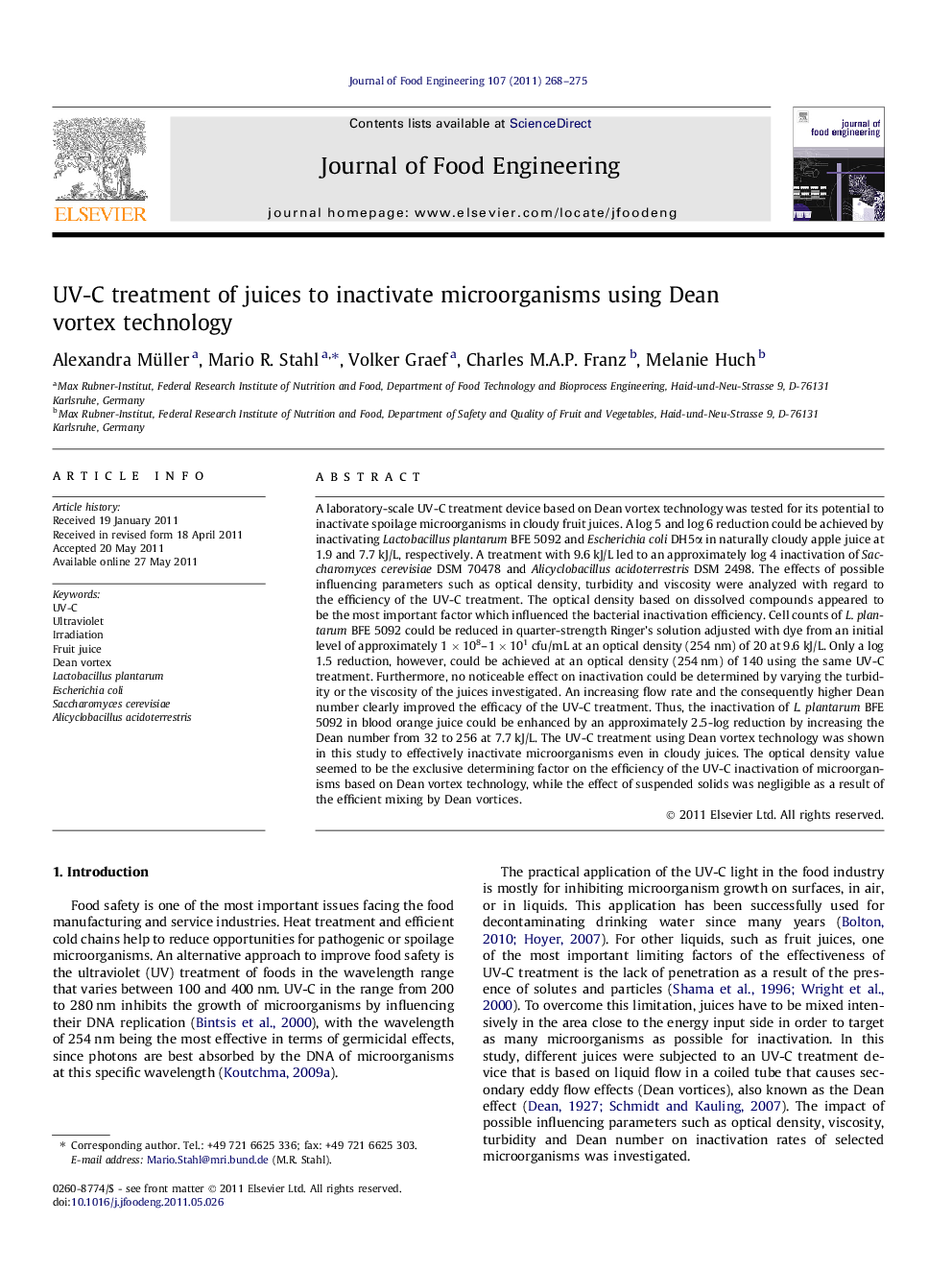| کد مقاله | کد نشریه | سال انتشار | مقاله انگلیسی | نسخه تمام متن |
|---|---|---|---|---|
| 223924 | 464414 | 2011 | 8 صفحه PDF | دانلود رایگان |

A laboratory-scale UV-C treatment device based on Dean vortex technology was tested for its potential to inactivate spoilage microorganisms in cloudy fruit juices. A log 5 and log 6 reduction could be achieved by inactivating Lactobacillus plantarum BFE 5092 and Escherichia coli DH5α in naturally cloudy apple juice at 1.9 and 7.7 kJ/L, respectively. A treatment with 9.6 kJ/L led to an approximately log 4 inactivation of Saccharomyces cerevisiae DSM 70478 and Alicyclobacillus acidoterrestris DSM 2498. The effects of possible influencing parameters such as optical density, turbidity and viscosity were analyzed with regard to the efficiency of the UV-C treatment. The optical density based on dissolved compounds appeared to be the most important factor which influenced the bacterial inactivation efficiency. Cell counts of L. plantarum BFE 5092 could be reduced in quarter-strength Ringer’s solution adjusted with dye from an initial level of approximately 1 × 108–1 × 101 cfu/mL at an optical density (254 nm) of 20 at 9.6 kJ/L. Only a log 1.5 reduction, however, could be achieved at an optical density (254 nm) of 140 using the same UV-C treatment. Furthermore, no noticeable effect on inactivation could be determined by varying the turbidity or the viscosity of the juices investigated. An increasing flow rate and the consequently higher Dean number clearly improved the efficacy of the UV-C treatment. Thus, the inactivation of L. plantarum BFE 5092 in blood orange juice could be enhanced by an approximately 2.5-log reduction by increasing the Dean number from 32 to 256 at 7.7 kJ/L. The UV-C treatment using Dean vortex technology was shown in this study to effectively inactivate microorganisms even in cloudy juices. The optical density value seemed to be the exclusive determining factor on the efficiency of the UV-C inactivation of microorganisms based on Dean vortex technology, while the effect of suspended solids was negligible as a result of the efficient mixing by Dean vortices.
► A novel Dean vortex technology was used to inactivate microorganisms in fruit juices by 4–6 log units.
► Higher flow rates and consequent higher Dean numbers improved inactivation efficiency.
► Optical density of the juices was shown to be the major parameter influencing inactivation rates.
► Effect of suspended solids on inactivation rates were negligible.
► Higher viscosity of fruit juices did not reduce the inactivation efficiency.
Journal: Journal of Food Engineering - Volume 107, Issue 2, December 2011, Pages 268–275